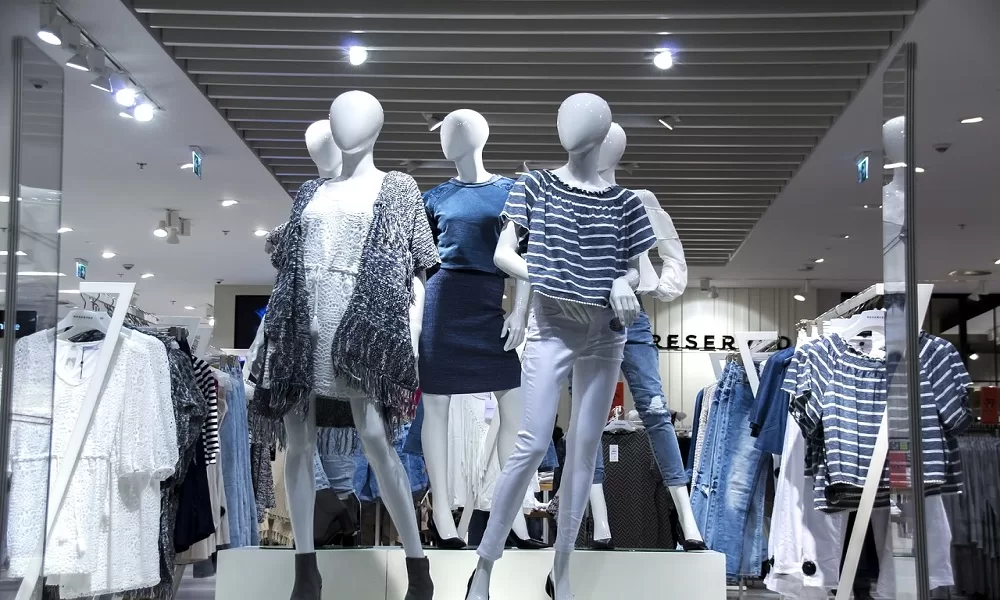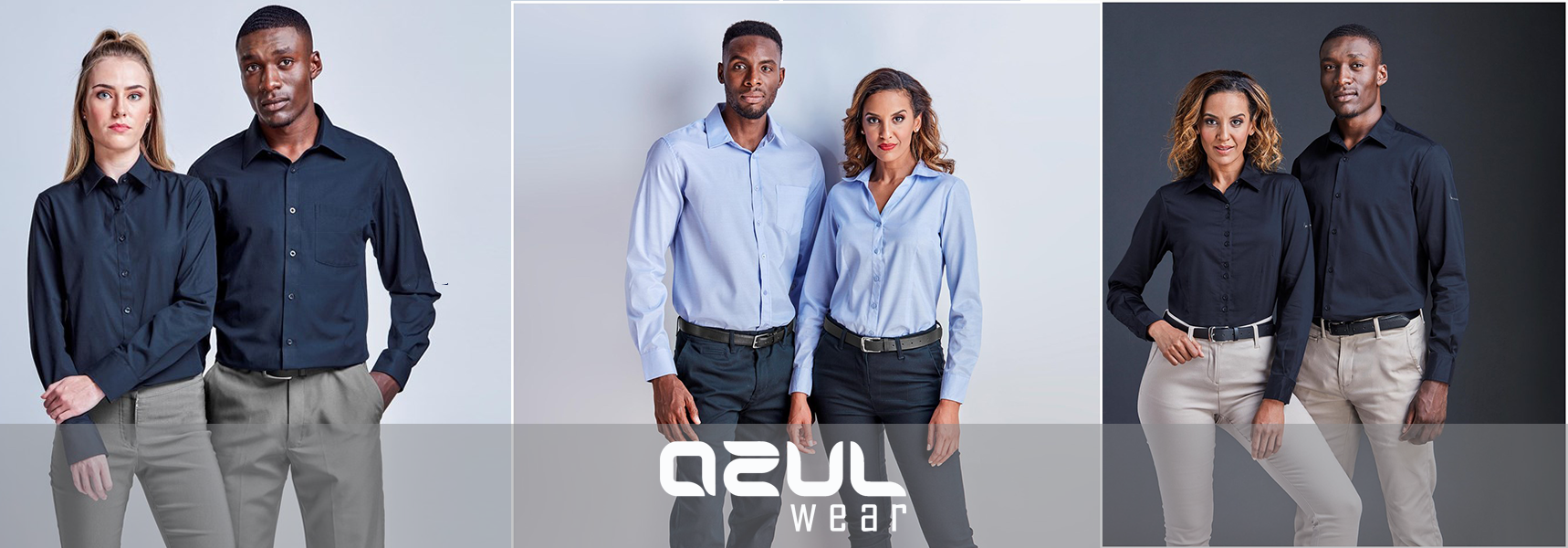How Branded Clothing Uses Fabric to Match Season and Occasion
How Branded Clothing Uses Fabric to Match Season and Occasion
Blog Article
Understanding Clothes: The Relevance of Textile Choices in Your Wardrobe
The option of textile in apparel plays a crucial duty in both looks and capability. Different materials supply varying degrees of breathability, longevity, and comfort, straight influencing the user's experience. Understanding these subtleties can enhance one's wardrobe considerably. Several overlook just how these selections can influence not simply individual design, but likewise sustainability. What textile decisions could redefine your wardrobe and straighten it with both design and responsibility?
The Duty of Fabric in Style and Capability

Common Material Kinds and Their Attributes
When selecting clothes, comprehending the attributes of typical textile types is crucial for making notified selections. Cotton, a widely-used all-natural fiber, is known for its gentleness, breathability, and versatility, making it appropriate for casual wear and everyday garments. Linen, an additional all-natural choice, flaunts exceptional moisture-wicking homes and a distinct appearance, suitable for warm climates.Wool, often preferred for its warmth and durability, differs in fineness; merino wool is soft versus the skin, while coarser types are utilized for outerwear. Synthetic textiles like polyester and nylon use durability and resistance to wrinkles, making them popular for activewear and traveling garments. Blends, which combine artificial and all-natural fibers, can enhance capability while keeping convenience. By identifying these textile characteristics, people can select apparel that aligns with their lifestyle and visual preferences.
Breathability and Comfort: Choosing the Right Fabrics for Various Climates
Choosing the best fabrics for numerous environments can considerably enhance comfort and overall wearability. Breathable products are crucial in hot climates, as they permit air flow and wetness dissipation. Fabrics such as cotton, linen, and moisture-wicking synthetics successfully attract sweat far from the body, maintaining the wearer cool and completely dry. On the other hand, in chillier climates, thicker textiles like woollen or fleece give insulation while retaining breathability, ensuring heat without overheating.Additionally, the option of fabric weight plays an important role; light-weight textiles are preferable for summertime, whereas much heavier alternatives are fit for wintertime wear. Comprehending the one-of-a-kind properties of each material enables people to dress suitably for varying weather conditions. Ultimately, picking comfortable and breathable fabrics customized to specific environments can substantially enhance day-to-day comfort and enhance the overall experience of using clothes.
Sturdiness and Treatment: Exactly How Fabric Impacts Durability of Your Wardrobe
Picking the best materials can greatly impact the durability and care demands of a closet. Fabrics such as cotton and polyester are recognized for their strength and convenience of upkeep, making them suitable for day-to-day wear. On the other hand, delicate products like silk and shoelace require more careful handling and specialized cleansing techniques, which can enhance the moment and initiative needed for care. Branded Clothing.Durability is additionally influenced by the fabric's weave and surface; firmly woven textiles often tend to resist wear and tear better than freely woven alternatives. Furthermore, synthetic blends typically offer boosted sturdiness, integrating the finest high qualities of multiple fibers.Understanding the care guidelines for every material is essential, as incorrect drying out or cleaning can cause premature wear. Inevitably, picking sturdy products can lead to a longer-lasting closet, decreasing the regularity of replacements and contributing to an extra sustainable fashion selection
The Effect of Textile on Fit and Silhouette

Lasting Fabric Options: Making Eco-Friendly Choices
The impact of fabric expands beyond fit and shape to incorporate ecological elements, prompting an expanding rate of interest in sustainable textile selections. Environmentally friendly fabrics, such as organic cotton, hemp, and Tencel, are obtaining grip among consumers that prioritize sustainability in their wardrobes. These materials are frequently generated with less chemicals and water, reducing their eco-friendly footprint.Additionally, recycled materials, made from post-consumer waste, provide an ingenious remedy to the textile industry's air pollution trouble. Brands progressively accept transparency in their sourcing methods, permitting customers to make educated choices regarding their purchases.Choosing lasting textiles not just sustains honest methods yet likewise urges the garment industry to embrace more liable production techniques. As awareness of environmental concerns increases, people are prompted to show on the long-lasting influence of their fabric selections, cultivating a motion in the direction of Get the facts a much more lasting and eco mindful approach to fashion.
Boosting Style: Exactly How Textile Can Transform a Clothing
While numerous might concentrate on shade and cut when picking an attire, the choice of material plays an important function in boosting style and improving total appearance. Different materials communicate distinctive state of minds and messages; for example, silk exudes high-end and elegance, while jeans uses a laid-back, relaxed vibe. The structure and drape of a textile can significantly change the silhouette, with structured textiles offering a sleek look and softer ones producing a more fluid, unwinded aesthetic.Moreover, the weight of the material affects wearability throughout periods. Lightweight fabrics like linen and cotton are excellent for summer, while much heavier materials such as wool and velvet supply warmth and style in chillier months. Understanding material homes, such as breathability and stretch, likewise empowers individuals to make enlightened options that enhance comfort without jeopardizing style. Inevitably, the appropriate textile can change an attire from normal to phenomenal, making it an essential factor to consider in any kind of wardrobe.
Often Asked Questions
Exactly how Do I Identify the Material Material of My Garments?
To determine material content, one can take a look at care tags, conduct shed tests for fiber recognition, or get in touch with fabric examples. These approaches aid separate materials, ensuring informed selections for garments treatment and maintenance in everyday wear.
Can Textile Option Affect My State Of Mind or Confidence?
Textile option can greatly affect an individual's state of mind and confidence. Branded Clothing. Certain materials may evoke feelings of convenience or beauty, while others can really feel uncomplimentary or limiting, eventually affecting self-perception and psychological wellness throughout the day
What Fabrics Are Ideal for Sensitive Skin?
For individuals with delicate skin, natural textiles like bamboo, linen, and cotton are often advised. These products are breathable, hypoallergenic, and much less likely to trigger irritability, making them ideal options for convenience and skin health and wellness.
Just how Do I Appropriately Wash and Care for Different Fabrics?
To properly wash and care for various textiles, one must consider each material's specific requirements, consisting of temperature level settings, detergents, and drying techniques, ensuring longevity and maintaining the fabric's initial top qualities for excellent use.
Exist Particular Fabrics for Athletic or Efficiency Put On?
Sports or efficiency wear usually uses textiles such as polyester, nylon, and spandex. These products are made for moisture-wicking, breathability, and adaptability, enhancing movement and convenience throughout physical activities while giving toughness and assistance. On the other hand, in colder environments, thicker textiles like wool or fleece supply insulation while preserving breathability, guaranteeing heat without overheating.Additionally, the selection of textile weight plays an essential duty; light-weight textiles are better for summer season, whereas larger alternatives are matched for wintertime wear. In contrast, fragile materials like silk and shoelace require more mindful handling and specialized cleansing approaches, which can enhance the time and effort needed for care.Durability is likewise affected by the fabric's weave and surface; securely woven fabrics have a tendency to stand up to wear and tear better than freely read this article woven choices. In comparison, rigid materials can restrict motion yet give a timeless, polished look.Moreover, the density and structure of the textile can influence the aesthetic perception of body shape. The influence of material expands past fit and silhouette to incorporate environmental factors, triggering an expanding interest in lasting fabric choices. The appearance and drape of a textile can dramatically alter the shape, with organized fabrics providing a polished appearance and softer ones developing a much more fluid, visit this web-site unwinded aesthetic.Moreover, the weight of the textile influences wearability throughout seasons.
Report this page